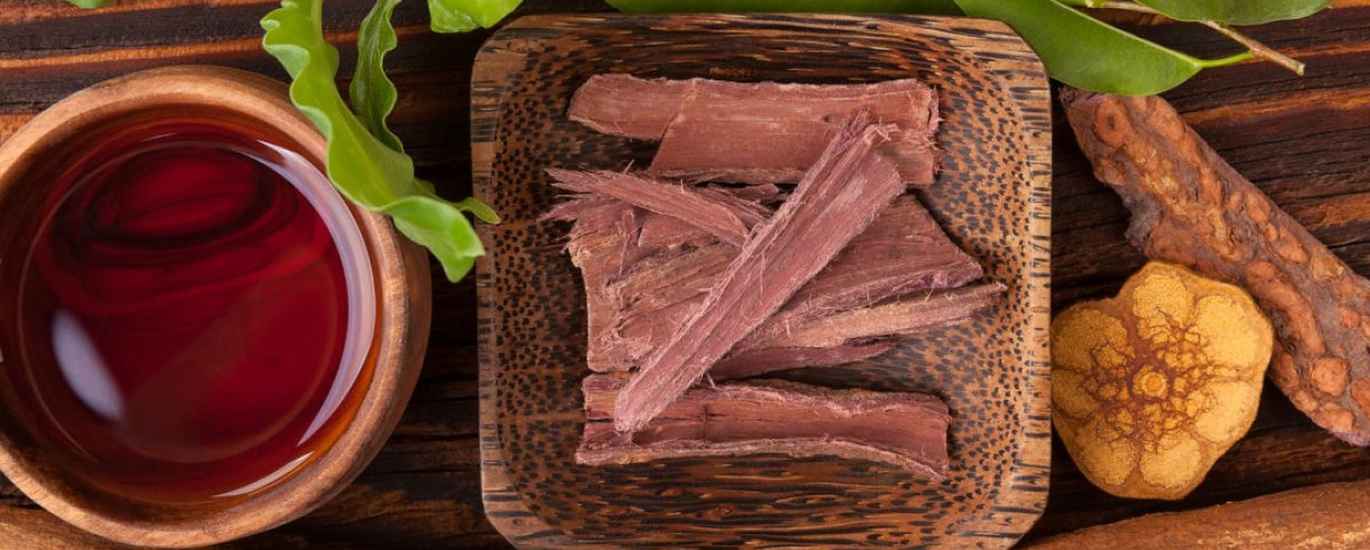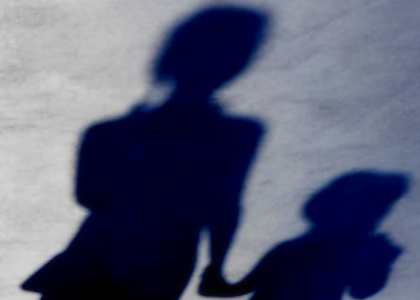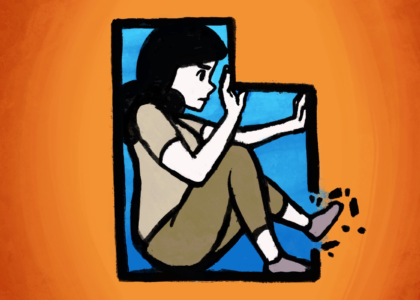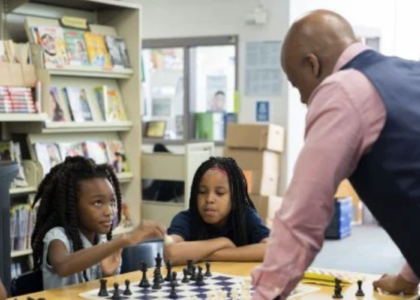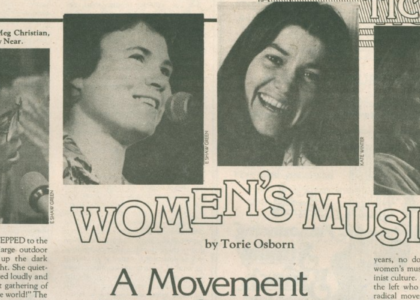“a beautiful relationship with ourselves and with what we’re connecting to”
Amy is joined by Tlawil Castillo to begin learning about the plant medicine, Mamá Aya. This episode is Part One or Two and discusses the history and science of ayahuasca as well as first hand experiences of a plant medicine practitioner.
Our Guest
Tlawil Castillo
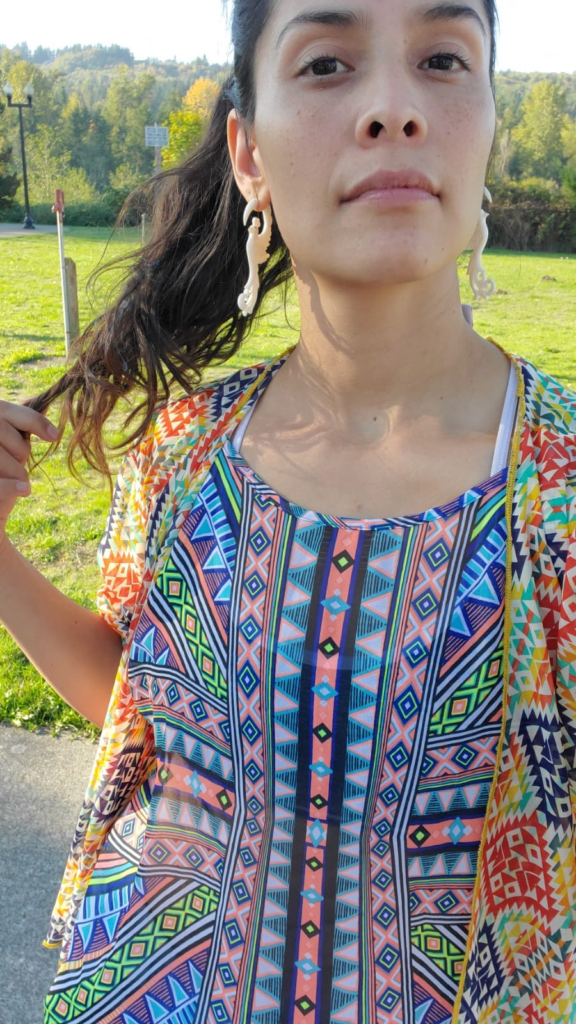
Tlawil Castillo is a devoted student of sacred ancient ways and a gate keeper for those who are committed to healing, evolving, and co-creating. She is a mother for all and a guide for those looking to deepen their connection with themselves and the forces of nature.
The Discussion
Amy Allebest: In South America, there grows a vine called banisteriopsis caapi. Along with other plants, its leaves are brewed into a tea called ayahuasca. In the Quechua languages, aya means spirit, soul, corpse, or dead body. And huasca means rope, woody vine, or liana. So the word ayahuasca has been translated as “liana of the soul” or “rope of the dead.” The plant contains dimethyltryptamine, or DMT, and when a person drinks the brew, it can lead to experiences that scientists would call psychedelic and traditional practitioners call a journey, led somehow by the plant itself. Thus, ayahuasca is also referred to by indigenous shamans as a sentient plant teacher, and even as a mother, Mamá Aya. Today we’re going to talk about Mother Aya, and to guide us in our conversation is Tlawil Castillo. Welcome, Tlawil. I’m so happy you’re here with us today.
Tlawil Castillo: Thank you, Amy. I’m so grateful that I have the opportunity and chance to represent this beautiful medicine that comes from South America. Thank you again for having me.
AA: I’m so excited to learn from you today, Tlawil. I wonder if you can start us off by sharing a little bit about who you are. Where you grew up, a little about your family that you come from, and how you came to do the work that you do today.
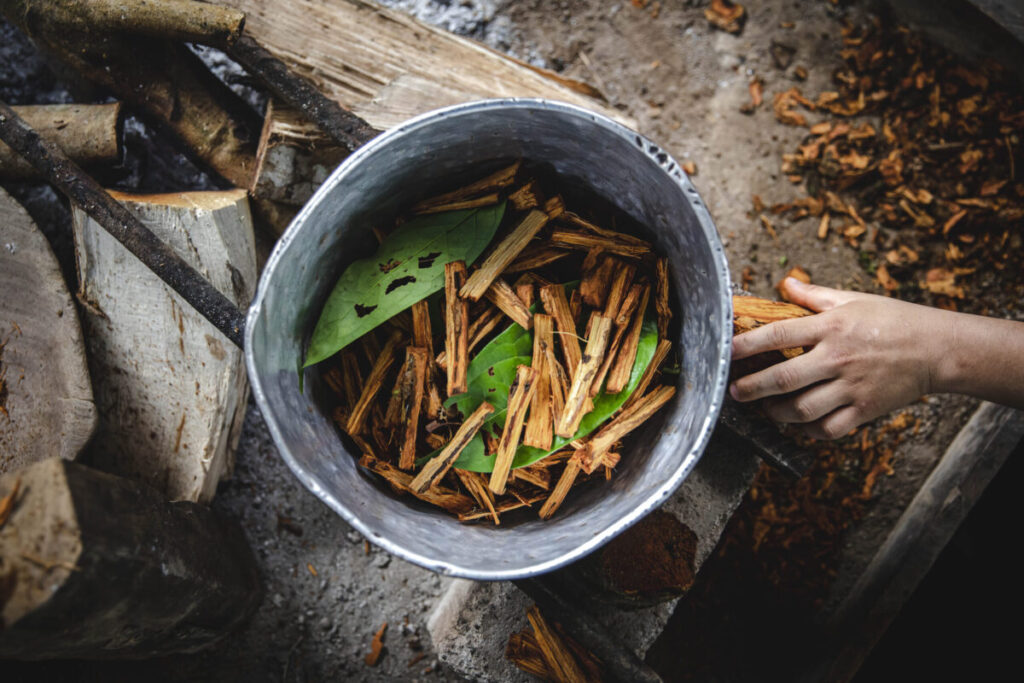
TC: Yeah, I had the honor to have incredible parents both from my mom’s side and my dad’s side. They’re both very spiritual. And my mom’s side is a lot of the Vedic philosophies, yoga, initiation schools, ashrams, meditations, breathwork, nutrition, massage, healing modalities, and herbalism. And through my dad’s side, it’s been the retro path, which is the indigenous path of sweat lodges, vision quests, sun dance, fire keeping, and many ceremonies. So, I grew up with both traditions, one from the Vedic philosophy, the internal work and the field of consciousness, mindfulness, awareness, healthcare, taking care of ourselves, and also navigating the tools and the map of how the body works, how the chakras work, how energy works. And with my dad, also the prayers, the devotion, the communities, the intention, the way things used to be a long time ago, in harmony with the tribes, in harmony with Earth. And how we were so devoted to these practices before, when we didn’t have a lot of jobs, we used to just care for the land and the land would take care of us. And eventually these two cultures blended with me, and I have the honor to share that with everybody.
AA: Can you tell us a little bit more about your parents? Where is your mom from and how did she learn all of these Vedic traditions? And where is your dad from? I’d love to know a little bit more about your parents and how they learned what they learned and taught you. Your mom is from Mexico and your dad is from Colombia, is that right?
TC: My mom is from México, yes, and my dad is Colombian, from Bogotá. For my mom’s tradition, there is an institution called the Great Universal Family, GFU, and that’s also where my dad was. And this institution has different initiation schools and different ways of getting into them. It’s kind of proven that you have to earn your right to even attend these schools. And on my dad’s side, him being from Colombia, Bogotá, they have all these different indigenous traditions, the Mamos, the Muiscas. The lineage that we carry is just Muisca. The Muiscas are also very resilient and their medicine is the song and dance and prayers and giving back to the earth. No medicines. They believe in the power of staying connected. My dad moved to the U.S. and found the Red Road path, and he is 78 now and has been walking it since he was 30. So it awakened something in him that was very important, which was to protect and keep sacred the medicines and the traditions.
So he follows the script of what he has learned from his elders. He had to earn his right to even partake and participate. He had to prove that he was taking this work seriously. Back in the day, you were not allowed to even be there, so it was an honor to even be there. Right now it’s a little bit more open, but there are still a lot of people who don’t allow it because it’s very sacred. They’re trying to keep their tradition alive. There is a prophecy where the eagle and the condor are going to fly together again, and that means the North traditions and the South American traditions are going to create a bridge and come together again. So my dad’s role, being from South America, was to learn the North American traditions, South Dakota traditions, Lakota traditions, and bring them into the South. And he’s been adopted by many tribes in Colombia, the Kogis, the Mamos, and he has earned and proved the work that he’s doing. So he has been adopted by all these many indigenous tribes. He represents them also and then brings those traditions back to the North.
I am also partaking in this because I’m bringing a South American medicine up here into the North. Mother Aya has a mission to awaken, a mission to restore, to remember, a mission to help the planet, to help Mother Gaia, to remember what’s sacred, to remember what’s our birthright, to remember how to stay in love. We forget who we are. We forget the sacredness that we carry. And Mother Aya’s mission is to help us remember how to stay connected to ourselves, our hearts, and our minds. How to stay healed, how to stay whole, and how to walk mindfully with each other.
AA: Going back to your journey, at first you took the path of your mom with a lot of prayer and meditation. What got you into plant medicine?
TC: The reason why I jumped and came to the medicines, I was 23 years old. I was very stubborn, meditating, chanting, breathing. I was constantly very devoted to praying, all the way until 23, and then I could get through my heart. And that’s when we had a vision quest. We have a four-day fast in nature, and it’s a commitment for four years. After you finish and have completed your four years of vision quest in nature, it can be in the jungle, it can be in the ocean, the mountains, it really depends where you’re at–
AA: For four years? Sorry, really quickly, just so I understand, for four years solid? You don’t come out of that experience, you’re completely immersed for four years or you just do some practice?
Mother Aya has a mission to awaken, a mission to restore, to remember, a mission to help the planet, to help Mother Gaia, to remember what’s sacred, to remember what’s our birthright, to remember how to stay in love.
TC: For four days. Four days at around the same time, the next year again and the next year again until you complete four years.
AA: Oh, okay.
TC: Yeah. I’ve done it five times. I was like, “I love this too much. Let’s go again!”
AA: Wow.
TC: When I did it the first time, it actually felt like I did a real vision quest. Before was just training, but after is like, “Whoa, now we’re talking. This is a real vision quest.” And after you complete that at sun dance, then you get asked, “Have you completed your vision quest?” And then you can sun dance. And I also sun danced for a long time, for eight years. I started when I was fourteen in Teotihuacán by the pyramids. I had the opportunity to connect to my Mexican roots. And then I got to the reservation in South Dakota where the sun dance started from, and I sun danced there for four years. So eight years sun dancing, and until 28, supporting. In between all those years I spent a lot of time communicating with the natives, sharing, praying, sweating, struggling, all of that. I’ve gone through a lot with everyone.
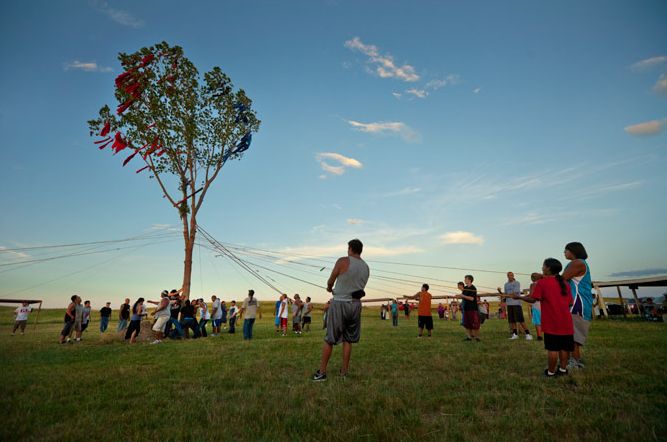
And it’s been incredible now that I serve the medicine that all the knowledge, all the wisdom from all these traditions, have deepened my awareness and my knowledge. When we’re sun dancing, we’re facing the east, receiving the sun. So we wake up before the sun comes up and we receive it. And we dance through the day until the sun goes down. We have breaks in between, but with sun dancing, we’re receiving the energy of the sun. We’re praying with the sun. We’re connecting to the sun. We’re not eating, we’re not drinking water. Our prayers are our nourishment, the sun is our nourishment, the earth is our nourishment, and it’s like a spiritual workout. You let go of your physical body’s needs in order to strengthen your spirit.
AA: Going back to the time that you were doing the Vedic side of your training and trying to recover from your breakup with meditation but it wasn’t working, was it at that point that you thought, “well, maybe I should try plant medicine”? How did that come about?
TC: Yeah, my first experience was after the vision quest, after the four days, and we did a peyote ceremony in a teepee. And peyote traditional ceremonies are very structured, there’s a lot to it. You can’t even lay down. You have to sit up the entire night, sunset to sunrise. I’ve done five of those with my family, and my dad’s been running them most of the time so I’m sitting right next to the people running them. I have witnessed, even when I was eight years old, people going through different ceremonies. And I’ve always been around ceremonies, but I had never gone in there because I was so stubborn, you know, “no, I have to do it on my own. I have to stay on my own.” But I’m so grateful because once you create a map for yourself, even if it’s in theory, the medicines you steep in your awareness all make sense.
And the crazy part about my journey is that these medicines, regardless of the experiences you have, when I was doing my practices of just breathing, just meditating, what I didn’t know is that even when we’re breathing, we’re activating the thyroid gland. And the thyroid gland starts activating the pituitary gland and then the pineal gland, releasing DMT. So when we’re meditating, we’re having altered states of consciousness. When you’re doing it right, when you’re breathing, when you’re connecting, we are capable of recreating these altered states of consciousness on our own. But it needs more consistency, like retention, holding the breath in, pulling the breath out, and then it creates a little layer, and then another layer, and then another layer, until you create layers enough to create that opening for the energy to come through and then have this outer state of consciousness. And it’s amazing. I was in shock, myself. I’m like, “I can’t believe this! What? You can have visions and all these things just by meditating and breathing.”
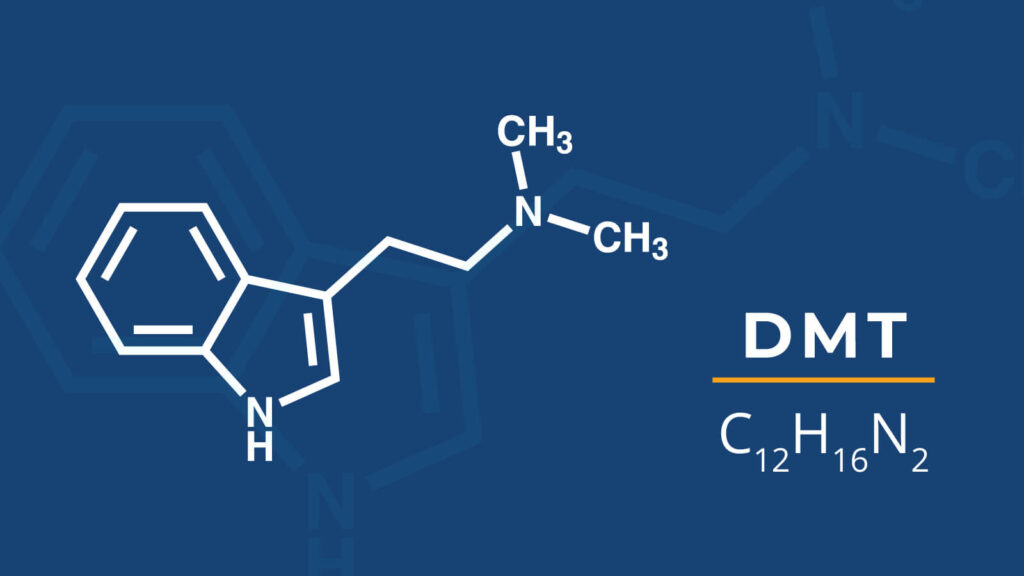
But it’s definitely incredible to have a good opportunity to have the medicines because if you are all blocked, and different people have different blockages, either physical, emotional, relationships, families, things they are overthinking, they forgot to connect to their body. They’re stuck in their mind, so they don’t know how to stay in the body. To have this outer self consciousness on your own, you need harmony between all these areas: your body, your mind, your heart, your emotions, your everything. Your spirit needs to be very focused, very aware of your breath where you’re at constant attention, constant present moment. Otherwise the energy leaks out all over the place if you’re distracted. And if you refocus all your essence into one thing at a time, that’s when things really happen. Because if we’re unhealed we keep repeating patterns. We walk straight forward with all that we are. No shame, no guilt. We know what we’ve gone through because we’ve put ourselves into it and we use all of our strength to move forward instead of the guilt, the shame. No, we use all of it to help us, propel us, to give us momentum.
AA: I love it.
AA: I just wanted to clarify for my own understanding, because I had asked about your dad and his tradition. Did that come through an unbroken line to his ancestors, or was there ever a Catholic conversion in the family? Did he have to rediscover that indigenous tradition in his lifetime?
TC: In Colombia, the indigenous tribes are very alive. You walk on the streets, you see indigenous people everywhere. You see art, you see things everywhere. So what happened back in the day is that the Mamos, for example, live in La Sierra. And so they knew that this was going to happen. So they went really deep into the mountains and walked for days until they found a place where they had one ladder that only one person at a time can cross. They would take that ladder away once everybody was in their village so no one else could reach them. No one for a long time. And then because they’re so connected to nature, they could feel there was something very wrong happening in the world. And that’s when they started coming out and started saying, “Hey, what’s going on? We have to protect this earth. We’re a part of her. How can you destroy something that you’re a part of?” And this is why as a collective we are feeling all this anxiety, depression, and anger, because we are not taking care of ourselves and we’re not taking care of the earth. How we treat the earth is how we’re treating ourselves, and how we treat ourselves is also projected onto where we’re living.
AA: One thing that comes to my mind based on my own life experience, where in my religion, women still aren’t ordained to priesthood. I come from a tradition where there are these really beautiful spiritual experiences that I’ve experienced, but a woman is never the conduit to act as a priestess. So, what does it feel like for you to be a shaman and to be the person that has a group of people and you’re guiding them on these journeys? I am imagining what that might feel like for myself to be in that position and it seems really powerful.
How we treat the earth is how we’re treating ourselves…
TC: Yeah, it’s very dreamy, haha. Because it’s not you, it’s a higher form of consciousness that is leading you, that is guiding everyone. Because even when I’m speaking, for the people that I’m connecting to, we are not in ourselves. We’re connecting, we’re here for the people, and we’re here to read the people to see what their needs are. And it’s so amazing. I know that in the fraternity, the tradition my mom comes from, there was not a woman allowed to be gurus, for example. You can get to a level of guru but no, there were no women. And nowadays, because we are changing in our ways, now there is the first woman that is a guru.
In Africa, a walking stick was hollow in the middle so women would deposit their menstrual blood in it. And by the time they reached menopause, they were the owners of the village. They were the ones that the village would come to for advice, for guidance. So at the end when we hit menopause, we are those people, we have all those experiences. Imagine every month we have to learn how to navigate our emotions. We’re open to the cosmos to receive all this information from the collective, because we women are birthing humanity and all humanity is connected to our wounds. So we feel that. Why do women struggle so much every month? Because of what’s happening in the world. We feel the world. So we receive that and we release it. We heal it, we let it go. And it’s also healing for us, it’s healing for our families, it’s nurturing for the earth. If you are honoring and treating as sacred this process that we were meant to go through, it’s a very subtle awareness but we are open.
AA: Can you talk a little bit more deeply about ayahuasca itself? This is an idea that will be really new to people who haven’t ever experienced it or read about it at all. To think of a plant as sentient and to think of it as feminine or as a mother is going to be a really new concept for a lot of people. How would you explain that?
TC: Mother Aya is as real, as communicative as we’re talking right now, and is a spirit. We have the opportunity to connect to her spirit because it comes from the earth. She’s channeling what the earth’s needs are, and she gets to experience what it is to have a human body because she’s inside of us. She is kind of a switch. You get to experience a plant and the planet and the consciousness that is beyond our comprehension as solid human beings, but she also gets to experience what it is to have a physical body and the chakras and beyond that, emotions. This is what we purge. Some people cry a lot or laugh a lot. It’s Aya experiencing all those emotions with you. It’s a gift for both.

And for those that never have experienced Aya, it comes in four ways. All experiences are completely individual, completely different for everyone, and unique. I’ve been running ceremonies and working with the medicine for 10 years this year. I’m 33. And I have seen a pattern, you know, after a while you get to see the patterns of where people are at and what journeys people go through. You know where different spaces are in this other field. And there is the physical experience where you don’t have a vision, you’re not hearing it, but you can feel the medicine in one area and it might be an area where you were hurt or there has been trauma. So it stays there and it heals it. And then it moves to a different area. Eventually it’s like a magnet. Aya uses high frequency so that everything that is negative in your body will bring it to the stomach and it will either come up or come down.
AA: You mean by vomiting? Because that’s really common too, right, it’s lots of purging?
TC: If you have a lot to cleanse out, it will be a lot of purging. But if once you do this enough that you don’t have to purge a lot, then you never purge again. And the second way will be very emotional. You don’t know why you are crying, but you’re crying. Or why you’re laughing but you’re laughing. Emotions just rise. Why are you grieving? Why are you sad? You don’t know. And then there is the mental, also the visuals. You have all these very active, full, like watching a very fast train in a movie. And the fourth way is all of them at once. You are very physical, very emotional, very lucid, and all of it’s happening.
And I would say there is a fifth one that is very, very deep, where you are in that realm, there is an in-between, and our bodies are not just physical, solid bodies. There is a spirit that moves, a spirit that sees, a spirit that hears, a spirit that feels. We have this body as a tool to navigate this realm, but yet we have this internal spirit that’s connected to everything else. And once we draw these physical senses, then we can use all the force into the spirit and the spirit that connects to the spirit of it all. And a lot of things that are alive have a spirit. Animals have a spirit, plants have a spirit, nature has a spirit. And once we are relaxed enough, you know, you go to the forest and lay down, you’re connecting to the spirit of the forest. And it’s very subtle. Nowadays, we tend to want gratification, people want ups and downs. When you jump out of a parachute you get adrenaline, you know, people want all these kinds of simulations. But there is medicine in nature. They’re subtle and the subtleness is how we are meant to be at all times, in peacefulness and chillness, instead of looking for highs and lows. But if you find steadiness, and that’s how spirit moves, in steadiness, it’s a beautiful relationship with ourselves and with what we’re connecting to.
Mother is so beautiful. She’s a mother. She is harsh like a mother if you need the wake-up call, but if you are very reverent, very respectful, and listen, she will treat you the same way you treat her. There are also different levels, there are gates. She will test you. She will make sure that you are worthy of her knowledge and wisdom and what she has to share. So she will trigger things, like, are you over your fears? She will present herself in ways that will make you scared to see if you are scared. And she will definitely trick you to move and pass the triggers that you have because there was no need. It’s all an illusion, it’s all emotions. We are meant to go beyond our emotions, and it’s all energy that we can use to our own advantage.
AA: What would it feel like if she was being harsh with a person? What would that feel like?
TC: Well, for example, if you have put things under the rug she will open up that rug and show you, “Hey, look what you’ve been doing.” So then it’s like a slap on the face, like, “I’ve been doing this wrong. I lied to this person,” or “I stole something.” She will bring it to your life and until you clear all that out and you do your work to stay in integrity, there is no more need to get that wake-up call. She doesn’t have to tell you anymore because you are tuned in, you have integrity. That’s why all religions teach to not do harm. Just be respectful.
AA: So, if you were acting as a shaman and a guide for a person who’s participating for the first time, having this psychedelic experience and this journey with Mother Aya, because it’s not the same as just thinking about it and being like, “I need to be a better person,” right? I’m just trying to understand the way that you’re describing it. Maybe it is a benevolent but firm feminine presence that leads you to learn things that you need to learn. And sometimes that’s not very fun. Would this person have a scary vision? Or what you hear with other psychedelic experiences, people will call it a “bad trip” or something. Is that what it would feel like? And then when they come up out of it, they’re like, “that was horrible.” What would they have actually experienced? Scary snakes and dragons, or is it just somebody coming to them and saying, “you need to change your ways”? What does that actually look like?
TC: I think mostly it’s that wake-up call like, “You’re not honoring yourself. You have not been loving yourself. You have not been respecting yourself. You have not been listening to your needs. You’ve been procrastinating in these areas.” It is definitely more of that way. There are other ways. They are not for us, but sometimes because of all the negativity and energies that are on the planet, sometimes they need an outlet, so they take advantage of the opportunity that we have to transform and shift this energy through Mother Aya. We get kind of called to, like, “we need your help to help transform these things.” So it will present things, for example, like I have seen very horrible things done to children, done to women, because there is a lot in the world that is very negative.
We are meant to go beyond our emotions, and it’s all energy that we can use to our own advantage.
AA: And you’ll see that in a vision, when you’re present when you’re taking the medicine, you’ll see it happen?
TC: Not all the time.
AA: That would be horrible.
TC: It’s very harsh. But to me, because I’m doing a higher work for the collective, most people do their personal work that they have to deal with internally. After they deal with that, they have the opportunity to either be a vessel for the collective or not. And I choose to do it because it has to be done. We just have to transform it. We have to heal it. We have to pray. When we’re in outer states of consciousness, our thoughts and prayers are a thousand times more powerful. So we have to take advantage of that energy to purify the land, protect children, protect mothers, protect fathers, and to do a lot of cleansing, cleansing, cleansing.
And it’s beautiful. You start being a vessel of alchemy for the world, the planet, and the collective, and it’s nothing to be scared of. The more fears you have in the back of your mind, the more they get released when you actually do the medicines. Because this medicine is very loving. It comes from the earth and we’re part of earth. The earth is loving, she’s so nourishing, she’s so beautiful. She really brings so much. She just wants us to be happy and the happier we are, the more we are actually doing our mission being here on this planet. So there’s nothing to be scared of. And if it comes, it’s to be transformed and to be acknowledged. And as soon as it’s acknowledged, it’s already out of the way.
We have to protect this earth. We’re a part of her.
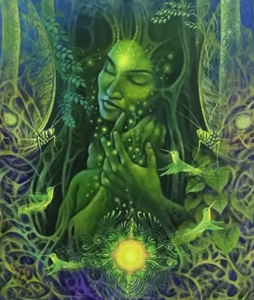
How can you destroy something that you’re a part of?
Listen to the Episode
&
Share your Comments with us below!

